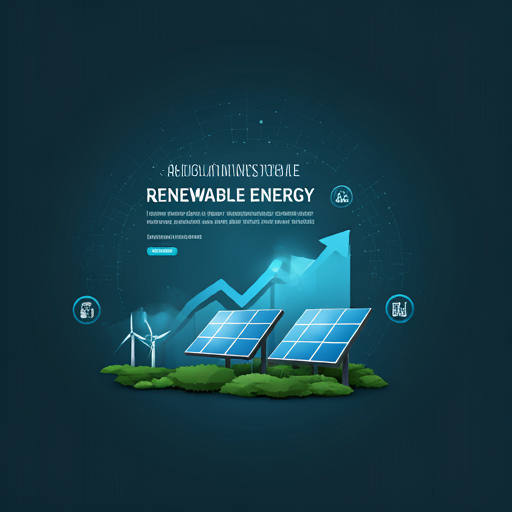Introduction to Renewable Energy and Cryptocurrency
Overview of Renewable Energy Sources
Renewable energy sources include solar, wind, hydro, and geothermal power. These sources are essential for reducing greenhouse gas emissions. They provide sustainable alternatives to fossil fuels. In fact, solar energy alone has seen a significant increase in adoption globally. This shift is crucial for combating climate change. The potential for innovation in this sector is immense. Imagine a world powered by clean energy. Cryptocurrency can facilitate investments in these technologies. It offers new financing models that enhance accessibility. This is an exciting development for investors.
The Role of Cryptocurrency in Energy Markets
Cryptocurrency is transforming energy markets by enabling decentralized transactions. This innovation reduces reliance on traditional banking systems. Consequently, it lowers transaction costs and enhances efficiency. Many energy producers are now exploring blockchain technology. This technology ensures transparency and traceability in muscularity trading. It’s a game changer for the industry. Moreover, smart contracts can automate energy distribution. This streamlines operations significantly. The potential for growth is substantial.
Current Trends in Renewable Energy Investment
Growth of Renewable Energy Projects
The growth of renewable energy projects is accelerating due to technological advancements and decreasing costs. This trend is evident in solar and wind energy sectors. Many countries are increasing their investments in these areas. This shift is essential for achieving sustainability goals. Furthermore, public and private partnerships are becoming more common. They enhance project viability and funding opportunities. The future looks promising for renewable energy.
Impact of Government Policies and Incentives
Government policies and incentives significantly influence renewable energy investment. Key factors include tax credits, subsidies, and regulatory frameworks. These elements create a favorable environment for investors. For instance, the Investment Tax Credit (ITC) has boosted solar installations.
Such measures attract both domestic and foreign investments. This is crucial for industry growth.
Cryptocurrency as a Tool for Financing Renewable Energy
Tokenization of Energy Assets
Tokenization of energy assets allows for fractional ownership and increased liquidity. This approach enables investors to participate in renewable energy projects with lower capital requirements. He can diversify his portfolio more effectively. Additionally, blockchain technology ensures transparency and security in transactions. This builds trust among stakeholders.
Such innovations are reshaping the financing landscape. They present new opportunities for growth.
Decentralized Finance (DeFi) Solutions for Energy Projects
Decentralized Finance (DeFi) solutions are revolutionizing funding for energy projects. By utilizing smart contracts, they streamline capital allocation and reduce transaction costs. This efficiency attracts a broader range of investors. He can access liquidity pools to finance initiatives.
Such advancements facilitate innovative financing models. They empower stakeholders in the renewable energy sector.
Opportunities for Investors in Renewable Energy
Long-term Financial Benefits
Investing in renewable energy offers substantial long-term financial benefits. Key advantages include stable cash flows and reduced operational costs. These factors enhance overall project viability.
Such benefits create attractive opportunities for investors. This sector is poised for growth.
Environmental and Social Impact Investing
Environmental and social impact investing focuses on generating positive societal outcomes alongside financial returns. This approach aligns with the growing demand for sustainable practices. Investors can support projects that promote renewable energy and community development.
Such investments contribute to a resilient economy. This is a strategic opportunity for investors.
Challenges Facing Renewable Energy Investments
Market Volatility and Risk Factors
Market volatility poses significant challenges for renewable energy investments. Fluctuations in energy prices can impact project profitability. Additionally, regulatory changes may introduce unforeseen risks. Investors must navigate these uncertainties carefully.
Such factors require thorough risk assessment. This is crucial for informed decision-making.
Regulatory and Compliance Issues
Regulatory and compliance issues significantly affect renewable energy investments. Navigating complex legal frameworks can be challenging for investors. Changes in policies may alter project feasibility. This uncertainty can deter potential funding sources.
Such challenges necessitate diligent research and planning. This is essential for successful project execution.
The Intersection of Cryptocurrency and Renewable Energy
Mining Operations and Energy Consumption
Mining operations for cryptocurrencies consume significant energy resources. This demand raises concerns about environmental sustainability. Many miners are now seeking renewable energy sources to mitigate their carbon footprint.
Such shifts can enhance the overall sustainability of the cryptocugrency sector. This is a critical development for the future.
Innovative Solutions for Sustainable Mining
Innovative solutions are emerging to promote sustainable mining practices. For instance, integrating renewable energy sources can significantly reduce carbon emissions. This approach not only benefits the environment but also lowers operational costs.
Such strategies can transform the cryptocurrency mining landscape. This is vital for long-term sustainability.
Future Outlook for Renewable Energy and Cryptocurrency
Emerging Technologies and Trends
Emerging technologies are shaping the future of renewable energy and cryptocurrency. He observes advancements in blockchain integration with energy systems. These innovations enhance efficiency and transparency in transactions. Additionally, artificial intelligence is optimizing energy consumption patterns.
Such trends indicate a promising future. This is an exciting time for investors.
Predictions for Market Growth and Development
Predictions indicate significant market growth for renewable energy and cryptocurrency. He anticipates increased investment driven by technological advancements. This growth will likely be fueled by regulatory support and public demand for sustainability. Furthermore, the integration of blockchain technology will enhance operational efficiencies.
Such developments present lucrative opportunities for investors. This is a critical time for strategic planning.
